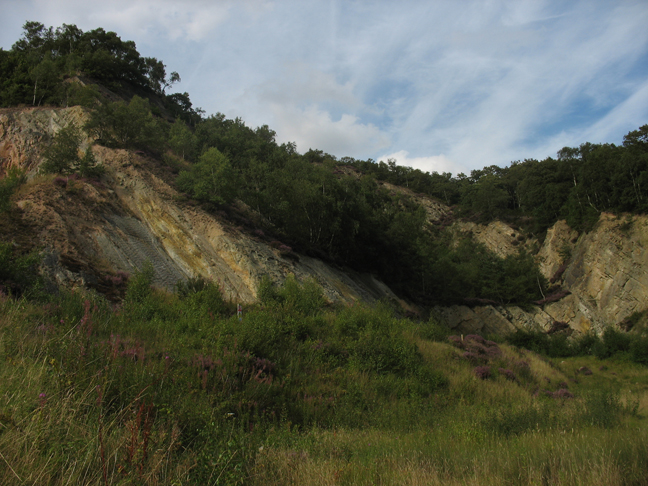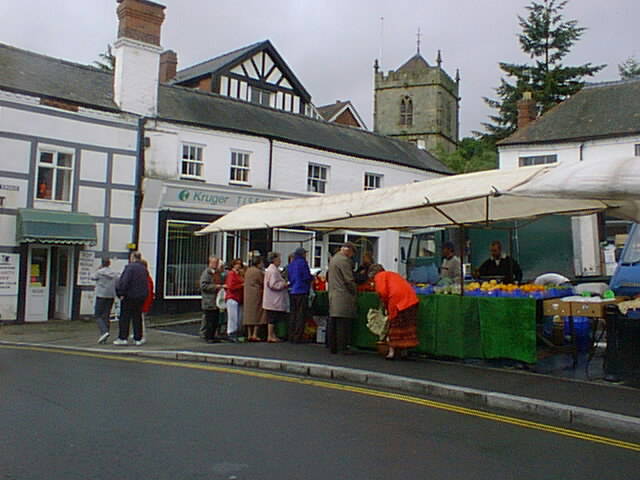|
Shropshire Wildlife Trust
The Shropshire Wildlife Trust is a wildlife trust covering the geographic county of Shropshire, England. Nature reserves The trust cares for, or is associated with, 42 nature reserves (plus its headquarters in Shrewsbury – see next section) in the county: Many of these sites are owned by the Trust – the most recent acquisition by the Trust is Catherton Common, in the Clee Hills, which at 527 acres is the largest Wildlife Trust nature reserve in the West Midlands region. The Trust is currently fund-raising to purchase the leasehold of Pontesford Hill – it already owns the freehold, along with neighbouring Earl's Hill. In 2012 the Trust was seeking to purchase the gardens of Charles Darwin's family home at The Mount in Shrewsbury, so that they may be opened to the public. Darwin's Shropshire garden offered for sale to trust (17 Feb ... [...More Info...] [...Related Items...] OR: [Wikipedia] [Google] [Baidu] |
Shropshire
Shropshire (; alternatively Salop; abbreviated in print only as Shrops; demonym Salopian ) is a landlocked historic county in the West Midlands region of England. It is bordered by Wales to the west and the English counties of Cheshire to the north, Staffordshire to the east, Worcestershire to the southeast, and Herefordshire to the south. A unitary authority of the same name was created in 2009, taking over from the previous county council and five district councils, now governed by Shropshire Council. The borough of Telford and Wrekin has been a separate unitary authority since 1998, but remains part of the ceremonial county. The county's population and economy is centred on five towns: the county town of Shrewsbury, which is culturally and historically important and close to the centre of the county; Telford, which was founded as a new town in the east which was constructed around a number of older towns, most notably Wellington, Dawley and Madeley, which is today th ... [...More Info...] [...Related Items...] OR: [Wikipedia] [Google] [Baidu] |
Quarry Wood, Hinstock
Quarry Wood nature reserve is a woodland on the west side of the A41 road at Hinstock in Shropshire that is managed by the Shropshire Wildlife Trust. Oak, birch and occasional hornbeam grow alongside swathes of rhododendron. The sandstone cliffs were formed in the Triassic period, around 220 million years ago, when this part of the country was hot and dry and dinosaurs were first emerging. The quarry may have provided the stone for the tower of St Oswald's church in the village and also some of the older houses, though quarrying ceased in the 1890s. The wood once provided cover for vast flocks of roosting thrushes and finches and, between 1966 and 1985, around 20,000 birds were ringed there. These birds no longer roost in such numbers, but the wood is home to a variety of birds including Eurasian jays, tits, Eurasian nuthatch The Eurasian nuthatch or wood nuthatch (''Sitta europaea'') is a small passerine bird found throughout the Palearctic and in Europe. Like other nutha ... [...More Info...] [...Related Items...] OR: [Wikipedia] [Google] [Baidu] |
Ludford, Shropshire
Ludford is a small village and civil parish in south Shropshire, England. The parish is situated adjacent to the market town of Ludlow and was, until 1895, partly in Herefordshire. The village is on the south bank of the River Teme, with Ludlow on the north bank, and is connected to the town by the grade I listed Ludford Bridge. The village is geologically notable with its Ludford Corner. History and geography Etymology The place name means the ford at the loud waters ("lud"); Ludlow's name means the hill ("low") by the loud waters. The loud waters are those of the River Teme, which flow rapidly through the area (now largely tamed by weirs). Domesday Book Ludford, Steventon, and the Sheet are all mentioned in the Domesday Book of 1086 as manors. They existed prior to the town of Ludlow, which grew up during or after the construction of the Norman castle there. Shropshire and Herefordshire Historically the parish was divided between Shropshire and Herefordshire and the vill ... [...More Info...] [...Related Items...] OR: [Wikipedia] [Google] [Baidu] |
Clun Forest
Clun Forest is a remote, rural area of open pastures, moorland and mixed deciduous/coniferous woodland in the southwest part of the English county of Shropshire and also just over the border into Powys, Wales. It was once a Royal hunting forest covering an area that stretched from Ludlow up the Clun Valley. Set aside for hunting in mediaeval times, these areas were not necessarily heavily wooded, though in today's landscape there are numerous small woods, such as Radnor Wood, together with larger areas of conifer plantations established by the Forestry Commission along the Wales–England border north of Anchor for example (the planted Ceri Forest), and to the north and southeast of Clun. The ancient Offa's Dyke runs north–south through the area (and can be walked by the Offa's Dyke Path). It gives its name to a deanery of the Church of England's Diocese of Hereford. Geology The Forest is underlain by a succession of mudstones, sandstones and siltstones of Silurian age. ... [...More Info...] [...Related Items...] OR: [Wikipedia] [Google] [Baidu] |
Church Stretton
Church Stretton is a market town in Shropshire, England, south of Shrewsbury and north of Ludlow. The population in 2011 was 4,671.National Statistics Church Stretton 2011 population area and density The town was nicknamed Little Switzerland in the late Victorian and period for its landscape, and became a health resort. [...More Info...] [...Related Items...] OR: [Wikipedia] [Google] [Baidu] |
Comley
Comley is a hamlet in Shropshire, England. It is near the A49 road, to the northeast of Church Stretton. It is situated between two prominent hills: Caer Caradoc to the south and The Lawley to the north. The elevation of the hamlet is around above sea level.Ordnance Survey mapping The hamlet is largely in the civil parish of Cardington, but Comley Farm is just within Longnor. Shropshire Wildlife Trust have a nature reserve A nature reserve (also known as a wildlife refuge, wildlife sanctuary, biosphere reserve or bioreserve, natural or nature preserve, or nature conservation area) is a protected area of importance for flora, fauna, or features of geological or ... in the former Comley Quarry. See also * Comley limestone References External links Hamlets in Shropshire Cardington, Shropshire {{Shropshire-geo-stub ... [...More Info...] [...Related Items...] OR: [Wikipedia] [Google] [Baidu] |
Clunton
Clunton is a village in south Shropshire, England, to the east of the small town of Clun. Location It lies on the B4368 road between Clun and Craven Arms. It is part of the civil parish of Clunbury. The nearest railway station is Hoptonheath. The village is at above sea level. The village centres on the B4368, though it branches southwards at Clunton Bridge (which crosses the River Clun). Near the centre is "The Crown" pub and St. Mary's Church. The Crown In 1994 the village public house, The Crown, was threatened with closure. A group of locals clubbed together and bought it, rather than lose it altogether . They still own it today. It remains a traditional country pub, with a selection of local real ales; The Crown has an entry in the CAMRA '' Good Beer Guide'' 2015. Clunton Coppice Nearby to the south of the village is Clunton Coppice, a remnant of the oak coppice woodland which was abundant in this part of Shropshire formerly, which is situated on a steep slope ... [...More Info...] [...Related Items...] OR: [Wikipedia] [Google] [Baidu] |
Chelmarsh
Chelmarsh is a village and civil parish in the English county of Shropshire. It lies 4 miles south of Bridgnorth on the B4555 road to Highley. Notable buildings The main feature of the village St. Peter's church. This is an example of the Decorated style and is built on the site of a Norman church, parts of the original building can still be seen. Other notable buildings include the former Chelmarsh Church of England Primary School, built in 1850 which closed its curriculum doors in July 2002; the building has since been converted into a dwelling. Another is Astbury Hall; a stately home with 320 acres. In 1889 it was destroyed by a fire but rebuilt in 1891. Up until 2017 it was the home to Judas Priest star K.K. Downing who transformed it into a golf course. Community It has one pub: 'The Bulls Head' in the main village, and the 'Unicorn' in the hamlet of Hampton, and is also home to Chelmarsh Sports & Social Club and Chelmarsh Parish Hallwww.chelmarshparishhall.co.uk. Che ... [...More Info...] [...Related Items...] OR: [Wikipedia] [Google] [Baidu] |
Catherton Common
Catherton Common is a nature reserve of the Shropshire Wildlife Trust, between Cleehill and Cleobury Mortimer in Shropshire, England. It is heathland, designated a Site of Special Scientific Interest. ''''. Retrieved 30 September 2021. Description The area of the reserve is ; it is an uncultivated landscape, in which houses and smallholdings are dispersed. There is heather, including , and[...More Info...] [...Related Items...] OR: [Wikipedia] [Google] [Baidu] |
Bushmoor
Bushmoor is a hamlet in Shropshire, England. It is located in the parish of Wistanstow, 1¼ miles north of that village, and half a mile west of the A49 road. The lane running into the village from Wistanstow is a Roman road, which ran between the Roman settlements and forts at Leintwardine and Wroxeter Wroxeter is a village in Shropshire, England, which forms part of the civil parish of Wroxeter and Uppington, beside the River Severn, south-east of Shrewsbury. ''Viroconium Cornoviorum'', the fourth largest city in Roman Britain, was sited .... The present day lane turns a sharp corner (to the east and the A49) off this ancient route and this is known as The Corner. Hamlets in Shropshire {{Shropshire-geo-stub ... [...More Info...] [...Related Items...] OR: [Wikipedia] [Google] [Baidu] |
The Ercall
The Ercall is a small hill in Shropshire, England, between The Wrekin and Wellington. It is an internationally important geological site, part of The Wrekin and The Ercall Site of Special Scientific Interest (SSSI). The hill is managed by Shropshire Wildlife Trust and includes 540 million year old ripple beds and ancient pre-Cambrian lava flows in exposed quarries. Quartzite from the neighbouring Wrekin is also visible. The Ercall bears the marks of extensive quarrying, although the quarries are now disused, safe and open to the public. When the M54 motorway was constructed in 1974, the road was built through the northern end of the hill. Flora and fauna The woods of the forest are important for various butterfly species. In the summer, the Ercall Woods which line the hill are a favourite habitat for the speckled wood and during spring when the forest is laden with bluebells, the dingy skipper can arrive in great numbers. The exposed quarries are popular with other butterfly ... [...More Info...] [...Related Items...] OR: [Wikipedia] [Google] [Baidu] |
Stiperstones
The Stiperstones ( cy, Carneddau Teon) is a distinctive hill in the county of Shropshire, England. The quartzite rock of the ridge formed some 480 million years ago. During the last Ice Age Stiperstones lay on the eastern margin of the Welsh ice sheet. The hill itself was not glaciated though glaciers occupied surrounding valleys and it was subject to intense freezing and thawing which shattered the quartzite into a mass of jumbled scree surrounding several residual rocky tors. At above sea level it is the second-highest hill in the county, surpassed only by Brown Clee Hill (). Stiperstones' summit ridge is crowned by several jagged outcrops of rock, which may be seen silhouetted against the sky. Geography The Stiperstones is noted for its tors of quartzite. The principal ones are named as follows, from north-east to south-west: * Shepherd's Rock () * Devil's Chair () * Manstone Rock () * Cranberry Rock () * Nipstone Rock () * The Rock () Manstone Rock is the highest of t ... [...More Info...] [...Related Items...] OR: [Wikipedia] [Google] [Baidu] |


